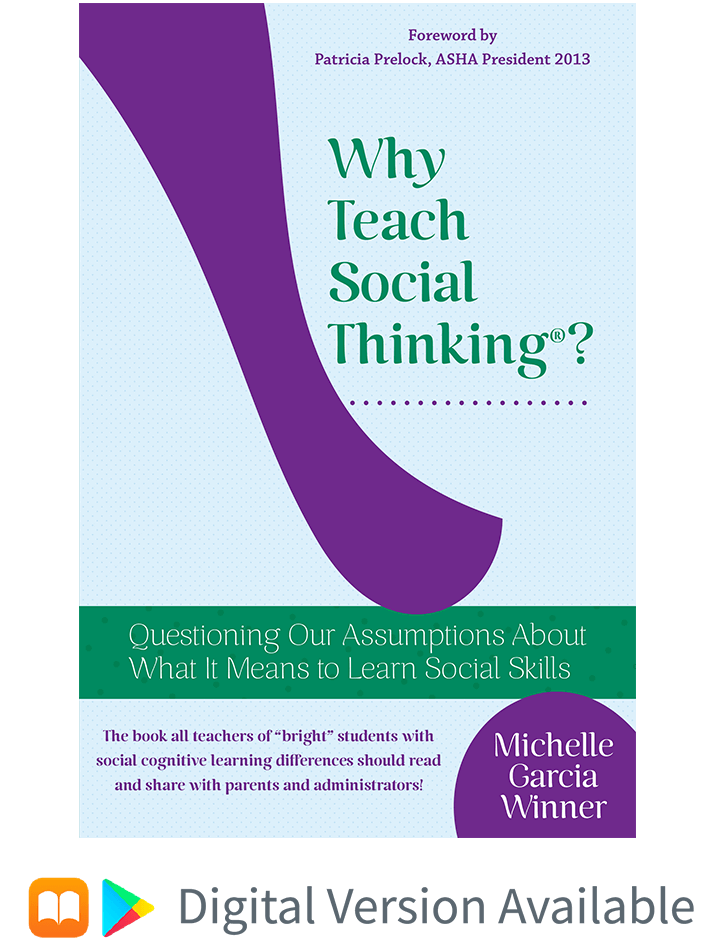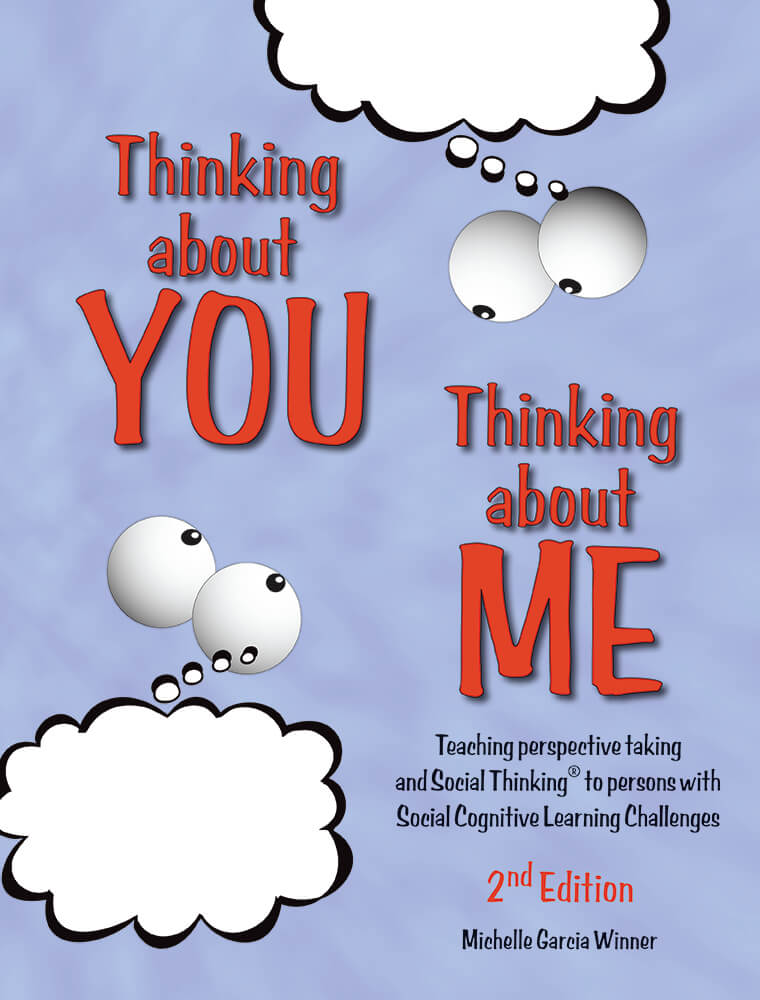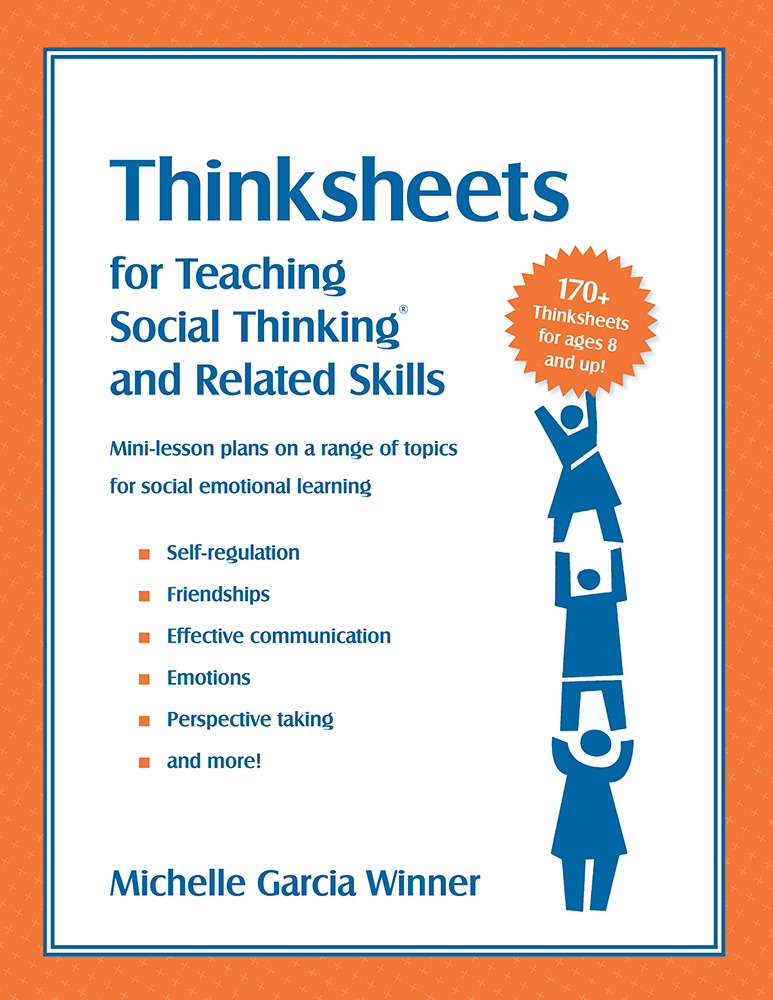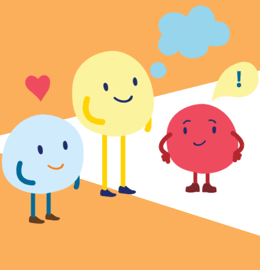Updated: September, 2022
© 2022 Think Social Publishing, Inc.
Thinking socially is what we do when we’re around others and when we send an email, sit in a classroom, line up at the grocery store, read a work of fiction, watch a funny video, participate in a business meeting, drive in traffic, and engage in a host of other daily activities that involve social interpretation. We consider the context; take in the thoughts, emotions, and intentions of the people; and (when needed) use that information to determine how we respond. How we think about people affects how we behave, which in turn affects how others respond to us, which in turn affects our internal and external emotional responses. It's an incredibly complex process that most of us take for granted.
One’s ability to think socially develops naturally and becomes intuitive for most of us. But for many individuals this process is anything but natural. Individuals with social learning differences and/or challenges may find it extremely difficult to think about what others are thinking and to use their social competencies in the exact moment they are needed. And one's ability to think socially has little to no relationship with conventional measures of intelligence. In fact, many people who score high on IQ and standardized tests do not intuitively learn the basics or the nuances of social communication and interaction.
The Social Thinking® Methodology was created by Michelle Garcia Winner and it continues to evolve with the help of Dr. Pamela Crooke. Our mission is to help people develop social competencies to better connect with others and experience greater well-being. We provide teaching and support frameworks and strategies that encourage individuals to focus their social attention, interpret the social context, and socially problem solve to figure out how to respond, with the overall goal of helping them make gains toward their social goals. The Social Thinking Methodology (STM) is based on research that includes but is not limited to the exploration of social-emotional development, neuroscience, communication science, emotions, anxiety, and depression.
The concepts and strategies found in the STM are a better fit for those social learners with average to superior language skills and cognition, regardless of diagnosis or lack of diagnosis. The methodology is also designed to guide parents and professionals toward better understanding of the social-emotional and social communicative process, to help them become more astute teachers of this information. Professionals and parents are using this information in schools, homes, communities, and work settings.
Consider these 19 concepts when using our Social Thinking Methodology:
- Social thinking is the user-friendly term for social cognition.
- When developing on a neurotypical trajectory, thinking socially develops from birth, much like motor skills.
- A milestone of infancy is joint attention. This occurs when babies naturally follow the gaze of another person. Others follow a baby's gaze too when attempting to figure out wants or needs. This is the building block for many parts of social communication, including play, cooperation, sharing an imagination, and working as part of a group. Once this milestone is reached, complex communication develops rapidly.
- Playing effectively with peers in the early years provides the foundation for sitting and learning in a classroom as well as having back-and-forth conversations. From a developmental perspective, interactive play encourages problem solving and teamwork.
- Students with social learning differences (and sometimes challenges) may not intuitively learn social information the way other children do.
- The STM includes a four-step process for teaching individuals how to socially attend, interpret, problem solve, and respond to social information, and to use evolving social competencies across contexts, whether in a classroom, on a playground, at home, or in the community.
- The STM’s frameworks and strategies are considered metacognitive (thinking about thinking) and rely on language to talk about and understand thinking and feeling.
- The STM teaches that social skills are not to be memorized. Rather, social competencies evolve across our lifetimes. As infants, we begin by using our eyes to be aware of our caregivers and then of other people. We think with our eyes to figure out others’ thoughts, intentions, emotions, plans, etc.
- Our thoughts and emotions are strongly connected; we teach about this connection using a Social Emotional Chain Reaction. What each of us does or says has an impact on others’ thoughts and feelings, which impacts how they respond to us, which impacts how we respond to them and ultimately how we feel about ourselves.
- We notice and even think about people a lot of the time, even when we have no plans to interact with them; we refer to this as sharing space. Sharing space effectively means we interpret the social situation to figure out what might be an expected behavior for that situation based on the place and people.
- As part of our humanity, we are on a daily quest to manage how people perceive us. To encourage people to have more neutral thoughts and emotions about what we do and say, we consider how they may perceive our words and actions and adapt in hopes they consider us in the manner we intend.
- The STM focuses on how we as people, regardless of culture, share space and interact with others. We focus on humanity’s social agreements, which is why communities around the world invite our experts to present and share teaching materials.
- There are, of course, nuances in social behaviors across cultures. Using the Social Thinking- Social Competency Model,we teach individuals to be social observers to help problem solve how to coexist or interact with people of different cultures and age groups.
- When we focus on the nuance of social communication, we find that social expectations evolve across our lives. For example, how we apologize to another person shifts dramatically from age 5 to age 10 and then takes on a different form in our teenage and adult years.
- Our brain thinks socially, even when alone in our homes. To understand a novel, movie, web clip, or TV show, one must think about the characters’ emotions, thoughts, reactions, etc.
- Everything we do and learn in the academic world is rooted in thinking socially: considering the motives and intentions of people in literature and history, turning in assignments, considering the perspectives of classmates and teachers to participate in class, etc.
- Our social competencies are just as critical in adulthood as they are earlier in life. This applies when using digital communication as well!
- The Social Thinking Methodology helps to take abstract, implied social information and teach it explicitly in a step-by-step or concrete manner. Our core teaching frameworks provide individuals a top-level view of key social information, for example:
- Both neurotypically developing students and Neurodivergent students can also have mental health problems, including depression, anxiety, obsessive-compulsive disorder (OCD), and other issues. Using the STM does not replace the need for support from mental health providers, but it does incorporate strategies for anxiety management in its core teachings.
We hope you find our strategies and concepts helpful in your journey to teach social competencies. To kick-start your learning and dive deeper into our core concepts, watch our free webinar, The Social Competency Model: Teaching Social Competencies—More Than Social Skills. We’re thrilled when we hear from educators, clinicians, and families around the world that the Social Thinking Methodology has helped them change lives and we’d love to help you do the same!


















